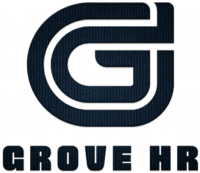Historically, HR teams spent countless hours buried in manual, paper-based processes. Hiring was cumbersome, onboarding inconsistent, and performance reviews subjective or delayed.
Record-keeping required endless filing cabinets, and error-prone payroll calculations ate up precious time every month.
According to a recent Harris Poll, 41% of HR managers report that failing to automate these processes leads to lower productivity, and 40% experience more errors. In fact, the cost of sticking with outdated HR approaches is both financial and cultural: it creates bottlenecks, increases overhead, and leaves employees disengaged.
Yet the last decade has seen this model disrupted by technology. HRMS platforms now automate everything from recruitment to payroll, enable self-service for employees, and offer real-time analytics to help leaders make smarter decisions.
This transition isn’t just about efficiency; it’s about giving HR the strategic role it deserves and freeing managers to focus on people, not paperwork.
Beyond Traditional HRIS
It’s important to distinguish HRMS from HRIS (Human Resource Information System), even though the two terms are often used interchangeably.
An HRIS is primarily a database, a digital filing cabinet for employee data, benefits, and job history. It offers core reporting and analytics but typically stops short of true process automation.
By contrast, a modern HRMS does much more. It incorporates HRIS features but also integrates tools for recruitment, onboarding, time tracking, payroll, performance enablement, and employee engagement.
Advanced HRMS platforms support workflow automation, self-service portals, integrated communication channels, and decision-support dashboards, transforming HR from a cost center to a driver of business value.
HRIS vs HRMS
Feature
HRIS
HRMS
Employee Data Management
Yes
Yes
Process Automation
Limited
Extensive
Recruitment & Onboarding
Basic
Advanced, automated
Payroll Management
Often external
Built-in, automated
Performance Management
Minimal
Continuous, integrated
Employee Self-Service
Rare
Standard
Strategic Analytics
Basic
Advanced, actionable
Best Fit
Data storage & compliance
End-to-end HR transformation
Why HRMS Adoption Is Essential for Modern Organizations

The business case for HRMS is overwhelming. Manual, outdated HR processes make it difficult to scale and adapt to a fast-changing environment. They introduce errors, increase costs, and negatively affect candidate and employee experiences.
Research shows that 35% of HR managers cite higher costs due to not automating manual operations, while 18% say it damages candidate experience, and 17% say it hurts employee experience and engagement.
Modern HRMS platforms solve these challenges by centralizing all HR activities in a single, integrated platform accessible from anywhere and updated in real time. This not only streamlines workflows but also fosters a culture of transparency, agility, and data-driven decision making.
The Four-Step Roadmap to Streamlined HRMS Management
Successful HR leaders are embracing a simple but powerful framework to overhaul HR processes:
- Review: Start by mapping every step in your existing HR workflows, from recruiting and onboarding to payroll and performance management. Identify bottlenecks, duplication, and manual touchpoints.
- Replace: Transition from paper-based and legacy systems to cloud-based HRMS platforms that offer automation and integration.
- Integrate: Ensure your HRMS connects seamlessly with other business systems, finance, IT, and communications to create a unified digital workplace.
- Track: Monitor key metrics in real time, from time-to-hire and onboarding completion to engagement scores and turnover rates, to continually refine your processes.
This structured approach not only saves time but also ensures that HR can deliver measurable impact at every level of the organization.
Key Benefits of Modern HRMS Software

Accelerated Recruiting
Digital-first recruiting means faster hiring cycles, lower costs, and better candidate experiences. AI-powered HRMS systems can reduce cost per screen by up to 75%, increase revenue per employee by 4%, and decrease turnover by 35%.
Recruiters can publish jobs to branded career sites, share openings to social media, automate interview scheduling, and manage the pipeline from one dashboard.
Streamlined Employee Onboarding
Effective onboarding is directly linked to retention. Employees who go through a structured onboarding program are 58% more likely to stay long-term.
HRMS platforms automate the entire process from sending digital welcome kits and pre-recorded training videos to tracking onboarding checklists and enabling self-service information updates.
Automated Time Tracking and Attendance
View this post on Instagram
Automated attendance management saves companies as much as $100,000 a year, especially in mid-sized firms.
Modern HRMS tools use features like QR code clock-in, mobile geofencing, and self-service portals, making it easy to track and manage attendance, approve time-off requests, and assign work schedules—all from a mobile app.
Simplified Payroll Preparation
Payroll errors are a leading cause of employee dissatisfaction. HRMS software automates payroll calculation, taking into account allowances, leaves, overtime, and statutory deductions.
Payslips can be generated, reviewed, and distributed automatically, ensuring compliance and reducing the risk of mistakes.
Performance Enablement and Feedback
The shift from annual performance reviews to continuous enablement is crucial for agile teams.
Advanced HRMS systems support 360-degree feedback, customizable review templates for different roles, and real-time goal tracking.
Automation of review scheduling, reminders, and achievements recognition makes performance management more objective and motivating.
Elevated Employee Engagement

Disengaged employees are costly—lower productivity, higher turnover, and poorer customer outcomes.
With built-in engagement tools like surveys, peer recognition, company social feeds, and group messaging, HRMS systems foster a sense of community and encourage open feedback, no matter where employees are located.
Transforming HR from Administrative to Strategic
Adopting an HRMS is about more than just keeping up with trends—it’s a strategic investment in your company’s growth.
HR leaders now have the power to move beyond repetitive administrative work and instead focus on talent development, culture building, and workforce analytics.
The result is a workplace where HR can drive initiatives that matter—diversity, inclusion, leadership development, and business innovation.
Choosing the Right HRMS for Your Business
@vorecolStreamline your HR operations with an HRMS! Automate tasks, enhance employee engagement, and make data-driven decisions. Boost efficiency and stay competitive! #HRMS #HumanResources #Efficiency #EmployeeEngagement #HRTech♬ sonido original – Vorecol
Selecting the best HRMS platform depends on your organization’s size, industry, growth stage, and unique requirements.
For SMEs and startups, intuitive and free solutions make digital HR accessible without a huge investment. Larger organizations may require more robust systems with custom integrations and advanced analytics.
Key features to prioritize include user-friendly interfaces, seamless integration, mobile accessibility, robust security, compliance support, and scalability. Look for platforms with transparent pricing, strong customer support, and positive user reviews.
The Bottom Line
The role of HR is changing rapidly, and HRMS management is at the core of this evolution.
By moving from paper and spreadsheets to fully integrated, automated HR ecosystems, organizations can save time, reduce costs, and create a workplace where employees are empowered and engaged.
The future belongs to businesses that leverage HR technology, not just to streamline processes, but to unleash the full potential of their people.

